Cromer peregrine falcons and chicks in family photo
- Published
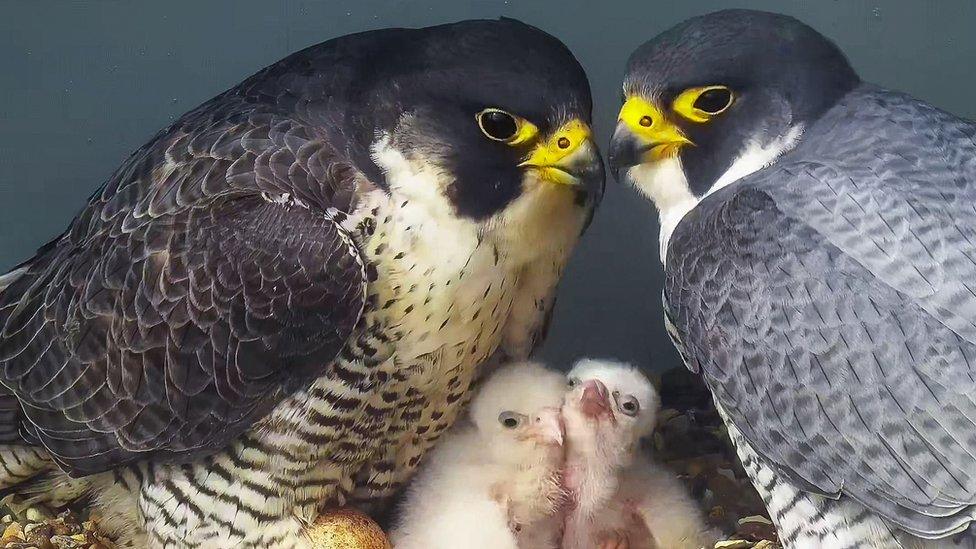
The parents "posed" for a rare shot with their chicks in a nest high up on a church tower in Norfolk
Thousands of people have tuned in to live webcam streams of a peregrine family nesting high up on a church top.
The birds of prey's chicks were eagerly anticipated after an egg failed to hatch in the nest on the Cromer church tower, on the Norfolk coast, last year.
A photograph of the proud parents and two of the newly-hatched young was shared by Chris Skipper, a founding member of the Cromer Peregrine Project.
Viewings on the YouTube streams of up to 120,000 were "bonkers", he said.
A male peregrine was first spotted at Cromer Parish Church in 2018, and was joined by a female in 2019.
The pair were seen mating in March of that year, and local bird enthusiasts quickly installed a nesting platform on the tower.

The falcon chicks' births were watched by thousands of people on a live webcam stream
In 2019, three chicks successfully hatched from three eggs, and the same happened in 2020.
Only one egg was laid in the nest last year which failed to hatch, but hopes were high when the female laid three eggs this year.
Two have hatched and the chicks and their parents were captured on camera to the delight of thousands.
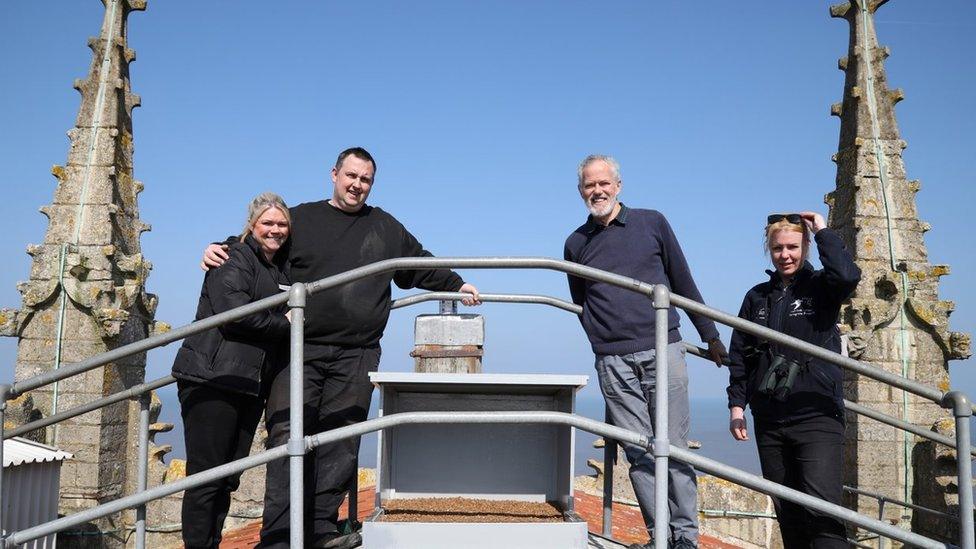
The nesting platform was installed 160ft (49m) up on the church tower by Chris Skipper (second left) and volunteers
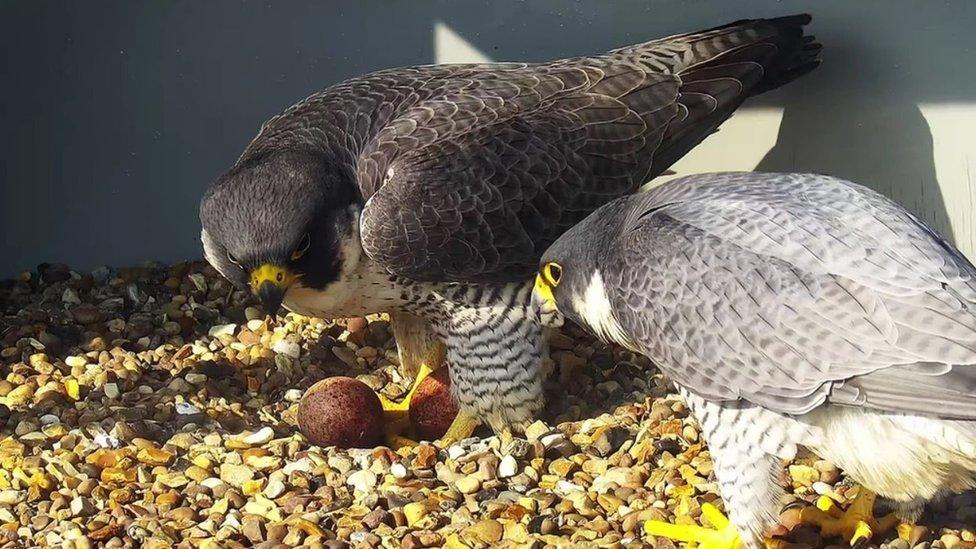
The peregrines took turns looking after the nest and their eggs this year
Mr Skipper said although the female was still sitting on the third egg, it was not thought to be viable.

Peregrine falcons
The birds of prey have a top flying speed of about 180mph (290km/h) when diving - making them the planet's fastest animal
There are about 1,500 breeding pairs in UK
Female peregrines lay about three to four eggs a year
UK birds remain resident all year round, while others are known to visit from northern Europe

A still image Mr Skipper took from the webcam focused on the Cromer nest earlier this week captured a rare moment with the female falcon, and male (tercel), sitting side-by-side with their two newly born chicks.
People on social media joked that none of the birds seemed to be "smiling" for the happy family shot.
"The male flew into the nest, sat by her, and I think she was giving him the 'evil eye', asking why he hadn't brought any dinner home," said Mr Skipper.

The peregrines' nest towers above the Cromer coastline
Live streams of the nest have been viewed by thousands of people, keen to see the moments the young hatched over the past years.
"This year, it's been bonkers - we've had about 120,000 views in the past month," he said.
Allow YouTube content?
This article contains content provided by Google YouTube. We ask for your permission before anything is loaded, as they may be using cookies and other technologies. You may want to read Google’s cookie policy, external and privacy policy, external before accepting. To view this content choose ‘accept and continue’.
"We had about 6,000 views each day for the first egg, and that rose to about 9,000 each day for the second," he said.
Total views on the webcams at various times have been about 400,000, he said.
Mr Skipper said although he could not be sure the same pair had nested on the church tower each year, he believed the female was the same one.
"Females tend to lay the same number of eggs - four is more common - but this one tends to lay three. We think it's the same male as the pair are bonded, but it might be an intruder - it's hard to tell," he said.
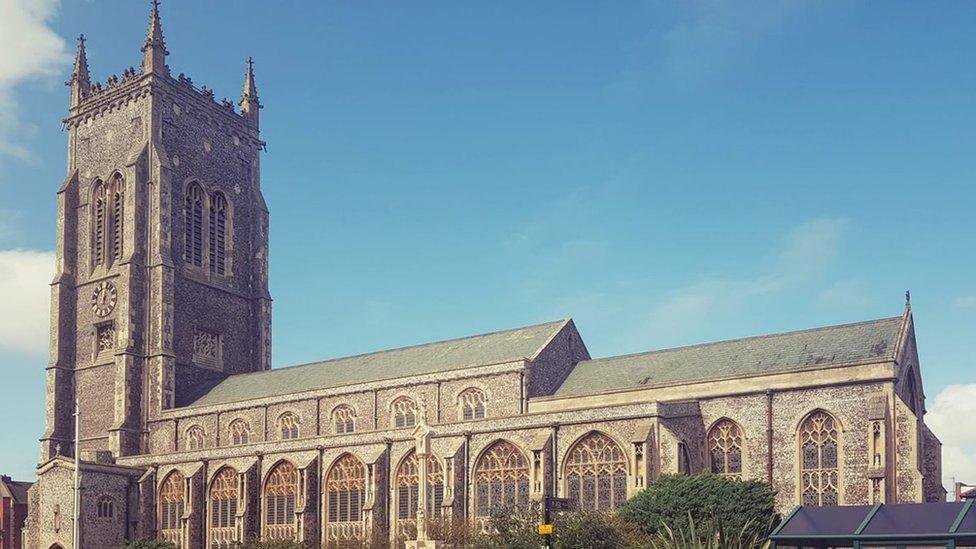
The peregrines have chosen to nest high up on the church tower
Mr Skipper said he was "thrilled" so many people had been watching the peregrines' progress over the years.
"It's been absolutely crazy," he added.

Find BBC News: East of England on Facebook, external, Instagram, external and Twitter, external. If you have a story suggestion email eastofenglandnews@bbc.co.uk, external
Related topics
- Published3 May 2022
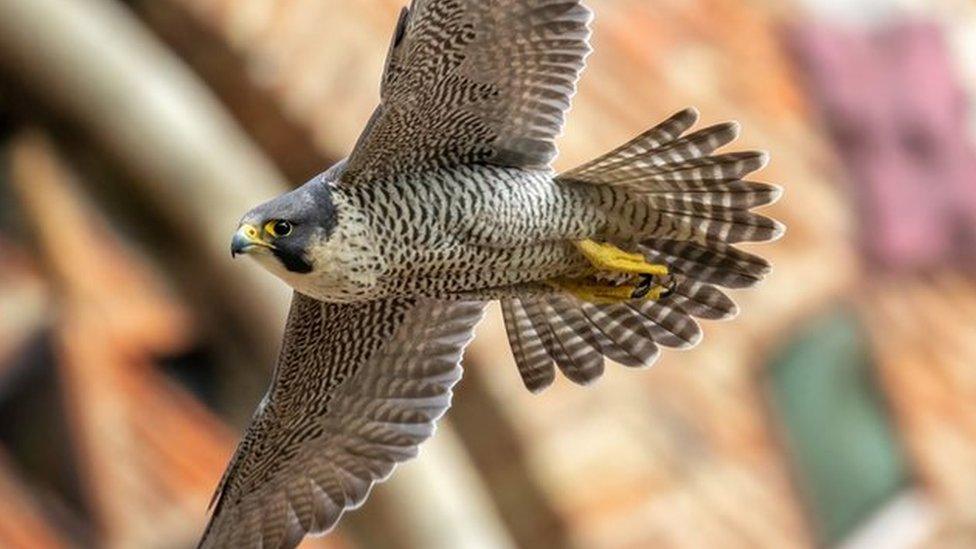
- Published5 April 2022

- Published4 May 2021
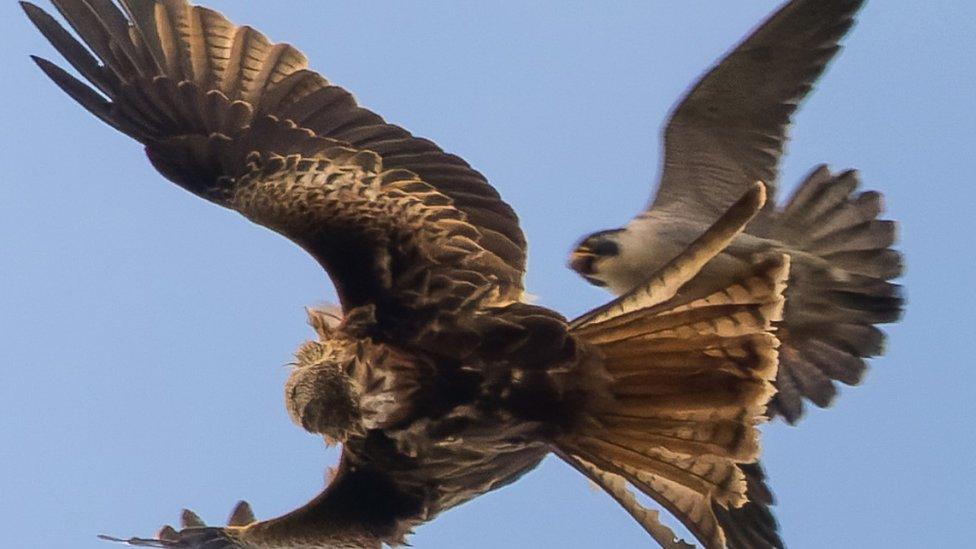
- Published19 April 2019
